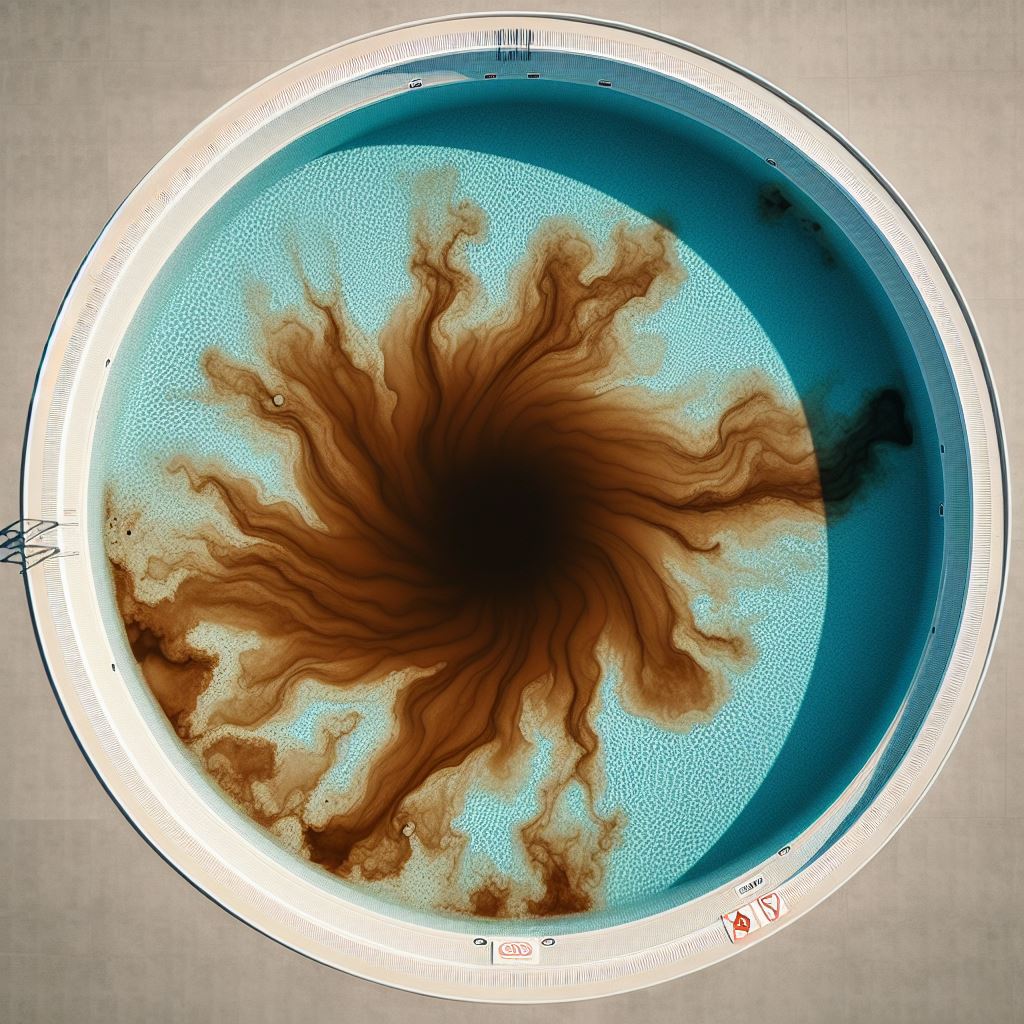Why does the water turn brown after adding chlorine tablets? This is a common source of confusion for swimming pool maintenance personnel and users alike. While chlorine tablets are crucial for maintaining the health of your swimming pool, they can sometimes lead to unexpected discoloration. Before delving into this issue, let’s first examine the mechanism of chlorine tablets and the chemical reactions in swimming pools.
There are several reasons why your swimming pool might turn brown after the addition of chlorine tablets. Understanding these reasons will help you better maintain your swimming pool.

Here are some potential reasons for your pool turning brown after adding chlorine tablets
- Presence of Iron and Manganese: Elevated levels of iron and manganese can cause color changes in swimming pools. When chlorine tablets are used as a water treatment agent, a microscopic “dance” occurs if the water has higher iron or manganese content. The interaction of chlorine, iron, and manganese in the water results in the formation of a colored compound, turning the water brown.
- Corrosion of Pool Heater: Prolonged exposure to water and chemicals may cause the pool heater to corrode. Introducing chlorine tablets into the pool for disinfection can trigger a chemical reaction with rust on the heating element. This reaction produces colored metallic compounds in the water, giving it an unnatural, typically brown or orange hue.
- Oxidation of Organic Matter: The oxidation of organic matter in swimming pool water is a significant factor in color changes. When chlorine reacts with organic matter in your pool, colored compounds are formed, leading to an abnormal color. This occurs when there is a substantial amount of organic matter in the pool, such as leaves, algae, or other pollutants.
Solutions to discolored swimming pool water
- Metal Chelating Agents: To address the color issue in swimming pool water, you can use metal chelating agents. These compounds react with heavy metals in the water to form stable compounds, effectively preventing water pollution by heavy metals. The application of metal chelating agents is straightforward—simply add the appropriate amount according to the instructions. This chelate combines with metals in the water to form a non-toxic complex, preventing their precipitation and changing the water color. Follow the instructions carefully to ensure proper dosage and avoid over-medication.
- Shock Treatment: Consider implementing a regular shock treatment for the swimming pool to address water quality issues. This involves adding a high concentration of chlorine to the pool to eliminate impurities and organic substances, improving water clarity. This method is easy to operate—just add the appropriate amount of anti-impact agent according to the product instructions. High concentrations of chlorine can quickly remove organic waste and chloramines from the water, helping restore water clarity.
- Filtration System Maintenance: Ensure that all components of the filtration system are in good working condition. Regularly inspect filters, pumps, and related equipment to identify and address any abnormalities or blockages. Immediate repairs or replacements should be carried out to ensure the normal operation of the swimming pool. Additionally, regular backwashing helps remove accumulated dirt from the filter, preventing damage to water quality.
By considering water quality, the use of chlorine tablets, and other potential external factors, we gain a better understanding of swimming pool behavior after adding chlorine tablets. A comprehensive grasp of swimming pool maintenance, combined with scientific measures such as appropriate chlorine tablet usage, water quality monitoring, and timely adjustments to maintenance practices, ensures the cleanliness and health of your pool, keeping it refreshing and inviting

 Instant
Quote
Instant
Quote Email
Us
Email
Us